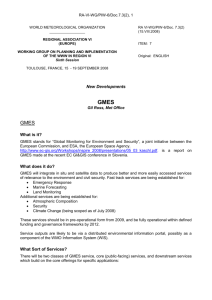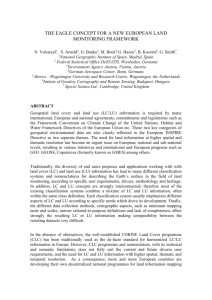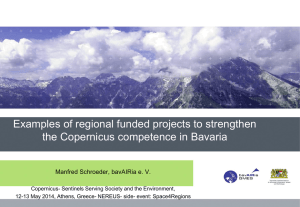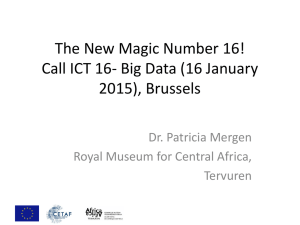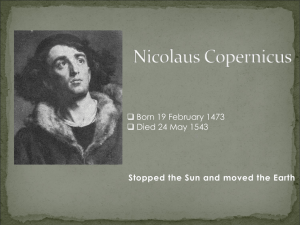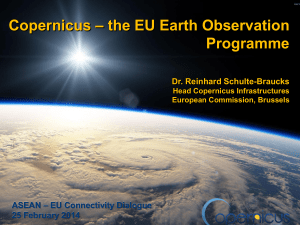DOC - Europa
advertisement
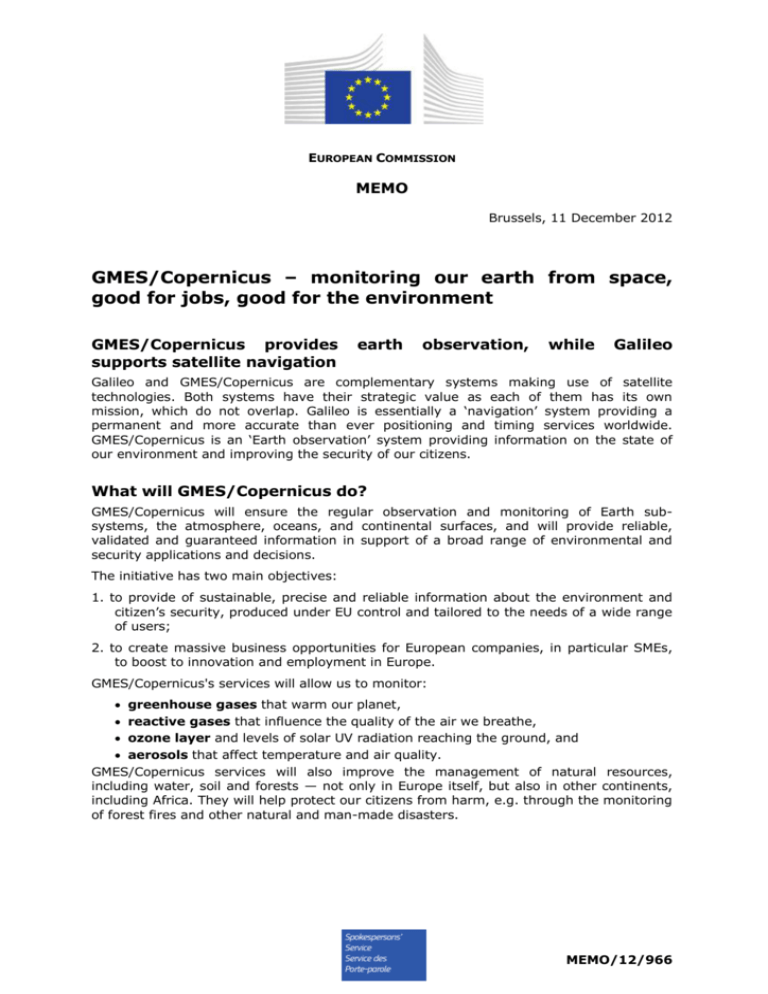
EUROPEAN COMMISSION MEMO Brussels, 11 December 2012 GMES/Copernicus – monitoring our earth from space, good for jobs, good for the environment GMES/Copernicus provides supports satellite navigation earth observation, while Galileo Galileo and GMES/Copernicus are complementary systems making use of satellite technologies. Both systems have their strategic value as each of them has its own mission, which do not overlap. Galileo is essentially a ‘navigation’ system providing a permanent and more accurate than ever positioning and timing services worldwide. GMES/Copernicus is an ‘Earth observation’ system providing information on the state of our environment and improving the security of our citizens. What will GMES/Copernicus do? GMES/Copernicus will ensure the regular observation and monitoring of Earth subsystems, the atmosphere, oceans, and continental surfaces, and will provide reliable, validated and guaranteed information in support of a broad range of environmental and security applications and decisions. The initiative has two main objectives: 1. to provide of sustainable, precise and reliable information about the environment and citizen’s security, produced under EU control and tailored to the needs of a wide range of users; 2. to create massive business opportunities for European companies, in particular SMEs, to boost to innovation and employment in Europe. GMES/Copernicus's services will allow us to monitor: greenhouse gases that warm our planet, reactive gases that influence the quality of the air we breathe, ozone layer and levels of solar UV radiation reaching the ground, and aerosols that affect temperature and air quality. GMES/Copernicus services will also improve the management of natural resources, including water, soil and forests — not only in Europe itself, but also in other continents, including Africa. They will help protect our citizens from harm, e.g. through the monitoring of forest fires and other natural and man-made disasters. MEMO/12/966 GMES/Copernicus offers business opportunities GMES/Copernicus's data collection and provision provides a huge potential for innovation and business development. Apart from the benefits for European citizens in terms of new innovative services, which improve their quality of life, it will generate economic growth and around 85 000 new jobs over the period 2015-2030. Studies show that the societal benefits exceed four to twelve times the cost (for more details see European EO and GMES Downstream Services Market Study) GMES/Copernicus services will deliver information to a chain of information re-processors and end-users on a sustained basis. The “GMES/Copernicus economy” will grow by attracting increased investment in the value-adding market to provide innovative applications to meet increasing user demands and expectations. The definition and implementation of services and related observation infrastructure is driven by user requirements. GMES/Copernicus user communities include institutional users such as the EU institutions, European intergovernmental institutions, public-sector users within EU Member States, European public-sector users from non-EU countries, non-EU public sector users and institutional research communities. An example of user driven innovation based on GMES/Copernicus's services which could generate business opportunities is the EU's ObsAIRve service.Obsairve. This smart phone 'app' enables real time access to air pollution data. In many European cities, air quality is of concern and is therefore monitored around the clock. In most cities, industrial air pollution abatement is, or tends to be, replaced by traffic-related air pollution. ObsAIRve allows real time access to air pollution data through mobile devices such as smartphones. Space manufacturing - Upstream impact GMES/Copernicus will have a significant impact on the space manufacturing sector, which we call the upstream impact. This is an important part of the European industrial policy. Moreover, it will also affect the data production and dissemination sector, which we call the midstream, as well as the value-added sector, which we call the downstream. A recent study analysed the most attractive downstream market segments for GMES/Copernicus, namely water, transport, oil and gas, non-life insurance, agriculture and electricity. The study, based on this sectoral analysis, was also able to estimate the potential job impact on the downstream activities. The number of jobs which will be created downstream are estimated at 68,182. When we add the upstream sectoral job creation, estimated at 16,403, the total impact of the GMES/Copernicus programme can be estimated at 84,585 jobs. This number is not including the midstream sector, as we do not have accurate data for this market segment. 2 GMES/Copernicus will offer important new services GMES/Copernicus will provide the following services: a land monitoring service providing information in support of European policies, such as environmental policies (nature protection and biodiversity, natural resources, environmental hazards, environmental impact assessment, water framework directive), regional policies, territorial cohesion and spatial development, Common Transport Policy, policies relating to SMEs and the Common Agricultural Policy (CAP); a marine service providing information on the state of the oceans, including sea level, currents, salinity, oil slicks; an atmosphere service providing information concerning chemical composition of the atmosphere driving climate change, and air quality as well as information on solar radiation; an emergency response support service will address natural disasters e.g. weather-driven hazards (e.g. storms, fires, floods), geophysical hazards (e.g. earthquakes, tsunamis, volcanic eruptions, landslides and subsidence), man-made disasters and humanitarian and civil emergencies (such emergencies are complex and require multi-disciplinary response); a security support service, e.g. in the field of maritime surveillance carried out by coast guards or critical infrastructure monitoring to reduce the number of terrorist attacks. A climate change service will be developed transversely with the aim of collecting reliable and continuous data on specific indicators to model climate change scenarios. GMES/Copernicus services should be fully and openly accessible within the restrictions imposed by the overall legal and policy framework (e.g. security issues). This is in line with the principles of the European Shared Environmental Information System (SEIS), and Global Earth Observation System of Systems (GEOSS) initiatives to promote the widest possible sharing and use of Earth observation data and information. 3 GMES/Copernicus's architecture and infrastructure Copernicus's architecture consists of: a Service component providing information for a broad range of environmental and security-related application areas and stimulating a downstream sector serving numerous applications on both a local and global scale, an Observation Infrastructure component with two sub-components for spacebased and airborne, seaborne and ground based (so-called ”in situ”) infrastructure. In order to provide GMES/Copernicus services, service providers will depend on input from space and in situ observation infrastructure. In many cases, observation infrastructure has already been developed and put into operation by Member States. This existing infrastructure has been and should be re-used as much as possible in order to avoid duplication. Only when - following a careful analysis of gaps in provision - existing capabilities have been found to be inadequate in meeting user requirements, new developments have been launched and financed by the EU. This is the case, in particular, for the space infrastructure developed by the European Space Agency (ESA), the coordinator of the implementation of the GMES/Copernicus space component. The provision of data from in situ infrastructure is coordinated by the European Environmental Agency (EEA). http://copernicus.eu Copernicus on Europa 4

